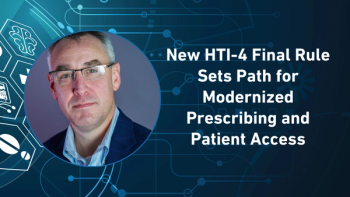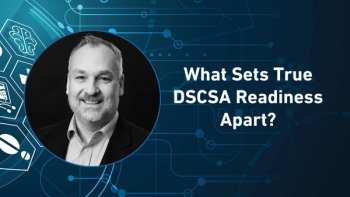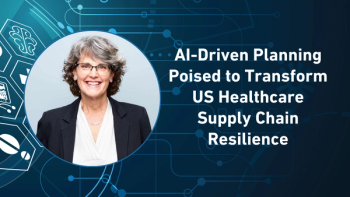
- Pharmaceutical Commerce - June 2023
- Volume 18
- Issue 3
Creating Value from Compliance Data
How maximizing the intelligence gained from brand engagement compliance activities can help drive pharmaceutical company commercial decisions.
Regulatory agencies demand extensive documentation from healthcare providers (HCPs), healthcare organizations (HCOs), and patients. Regulators demand documentation from life science companies in relation to interactions and engagement with these aforementioned groups. By harnessing this data and using it to generate business insights, life science companies can benefit from a greater understanding of interactions and the spending patterns that derive from them. Maximize the value of compliance data to your organization by using connected intelligence to generate insights that drive your commercial decisioning processes.
Leveraging compliance data for increased visibility
Compliance data is gathered from various sources, including transparency reports and internal audit results. These deliver information companies can leverage for increased visibility into HCP activities. For example, by integrating compliance into the DNA of a technological solution, companies can achieve real-time insights into upstream and downstream marketing activities and HCP touchpoints. Automation reduces the amount and cost of human resources required for monitoring and lifts the workload from executives’ shoulders, freeing them up to spend more time on strategic initiatives.
Using connected intelligence for actionable insights
By facilitating connectivity between platforms used for customer relationship management (CRM), financial management, logistics, and other functions, life science companies can parse, combine, and analyze their compliance data to use in strategic development. Through connected intelligence, artificial intelligence (AI) and machine learning (ML) can convert these data points into actionable insights that help to improve their services and logistical processes.
According to the 2022
Companies can initiate the process to optimize their compliance data by following these steps.
1. Integrate new data sources
The more data streams you have, the more detailed your insights can be. In addition to the standard sources of compliance data, implement ways to capture HCP office visit records, call logs, grant and donation management statistics, and medical information requests, among others. Develop key performance indicators and ways to identify and address the short- and long-term risks. Align these objectives with the organization’s business functions, and deploy AI and ML to integrate data sources automatically.
2. Govern the process strategically
Achieving maximum value from compliance data requires your team to capture and report a cross-section of data points accurately. Obtain high-level oversight of your key risk indicators by incorporating threat evaluation into your review processes along with traditional live and transactional monitoring.
Develop a workflow and platform that provides ongoing risk-based reviews and includes real-time reconciliation, transactional data, and spending checks. The platform must document all aspects of your key findings and provide your compliance team with the right communication tools to update the C-Suite effectively.
3. Find a fitting software solution
Data is no longer static, so an enterprise must find ways to keep the monitoring process flexible. It’s imperative to update HCP and HCO information consistently if looking to capture compliance data and optimize the insights it delivers. A fitting software solution must be able to:
- Facilitate connectivity between platforms
- Embed compliance in the solution’s basic DNA
- Leverage analytics and ML to develop an all-inclusive risk outlook
- Streamline the end-to-end engagement process, and
- Deliver accurate reports across multiple regulatory data formats.
A software solution offering standardized reporting methodology and seamless data collection can generate insights companies can then deploy to improve their services and logistics processes. The demand for data-driven intelligence delivers an opportunity to increase the value of the company’s investment in technology.
The role of AI and ML
Compliance is the motivating force behind many healthcare trends, including calls for greater transparency across the industry. AI and ML have transformed data analytics by providing a speed, scale, and granularity that may not be possible with traditional methods. These functions use algorithms to analyze the data and draw conclusions about possible future developments or ways to address existing challenges and opportunities.
An AI-powered analytics solution incorporates real-time analysis and correlation analysis. The first reduces the time it takes to apply insights and remediate problems because it occurs continuously instead of at intervals like traditional analysis. Correlation analysis surfaces meaningful connections between metrics to identify patterns. These patterns highlight anomalies that could predict future challenges, and commonalities that could indicate commercial opportunities.
Together, AI and ML enable immediate visibility into compliance data, regardless of whether it relates to marketing, field sales, legal services, human resources, research and development, or others.
Turning compliance data into business intelligence
Ongoing technology innovations allow companies to identify risks in near real-time, permitting proactive commercial decisioning. AI’s ability to identify patterns immediately enables life science companies to uncover potential problems and take steps to resolve them without delay.
Turn compliance data into business intelligence that life science professionals can use to improve the quality of HCP and HCO engagement. These rapid, data-driven interactions can give commercial teams a competitive advantage and help drive innovation for breakthrough drug developments and therapies.
About the Author
Ash Aggarwal is Principal, OUS Commercial Compliance Consulting Lead, at IQVIA.
Articles in this issue
over 2 years ago
Pharmaceutical Commerce - June 2023 Issue (PDF)over 2 years ago
Operational Trends Surrounding the Pharma Sales Processover 2 years ago
New Insights, Fresh Voicesover 2 years ago
The Lowdown on Logisticsover 2 years ago
IRA Journey Updateover 2 years ago
Addressing Rx Affordabilityover 2 years ago
Channel Fragmentation and Diversifying Product Archetypesover 2 years ago
Innovation in Heart Disease: A Deep Diveover 2 years ago
New Trends in Sales Force Organizationover 2 years ago
Realistic Net-Zero Goals for PharmaNewsletter
Stay ahead in the life sciences industry with Pharmaceutical Commerce, the latest news, trends, and strategies in drug distribution, commercialization, and market access.





